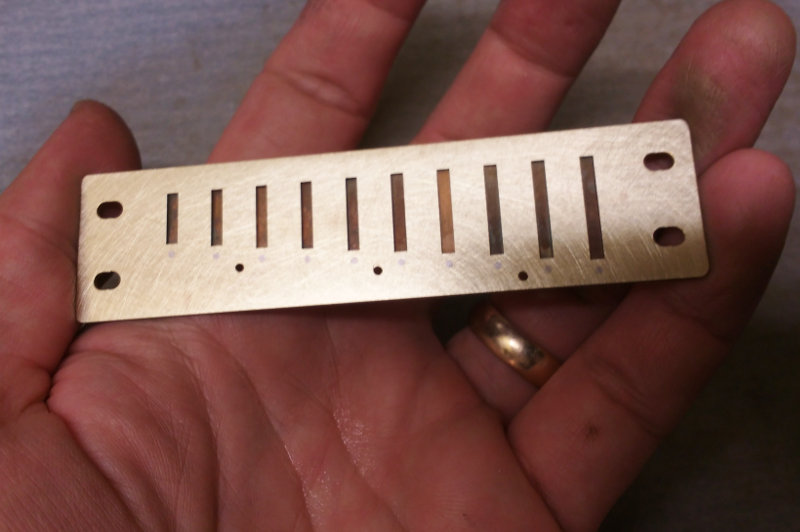Flat sanding the draw reed plate is one of the easiest things you can do to improve a harmonica. It almost always works.
BUT... There are exceptions to the rule and harps from any manufacturer can fall victim. I came across two examples of this in one week.
If you begin to flat sand a draw reed plate and see this, STOP! Flat sanding won't fix this. The curve in the plate is too big. The F tool™ can handle this!
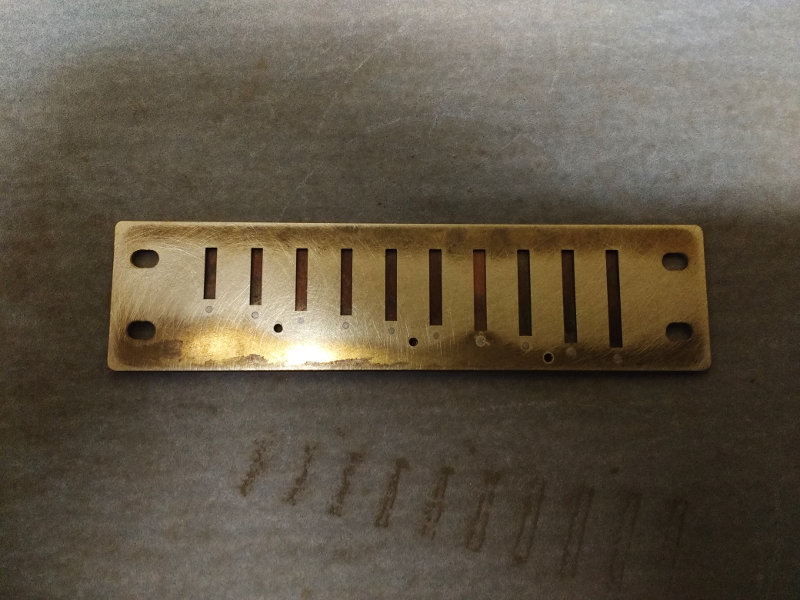
The curve is so deep that you cannot sand this down to make it right. Here is a view of the plate along with the French Tuner™ used as a reference. Can you see how much space there is in between the French Tuner and the reed plate? An air leak like this makes that harp feel really stiff!
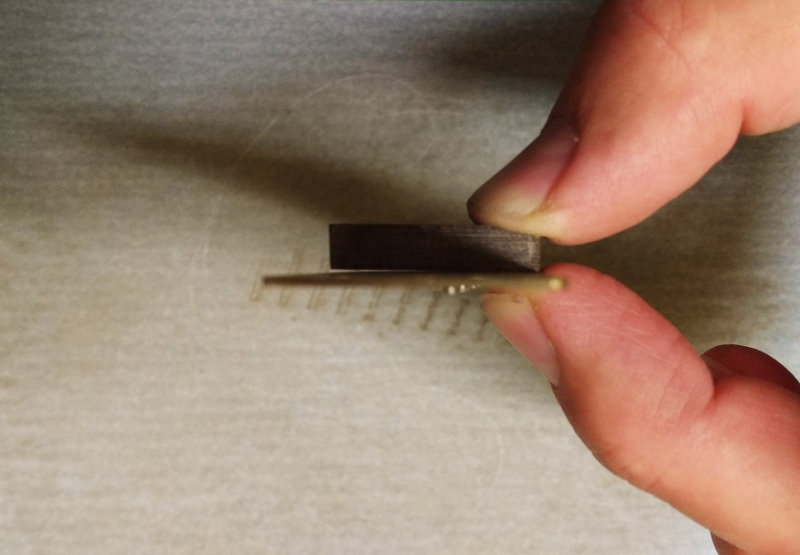
I straightened the plate using the F tool in the usual manner.
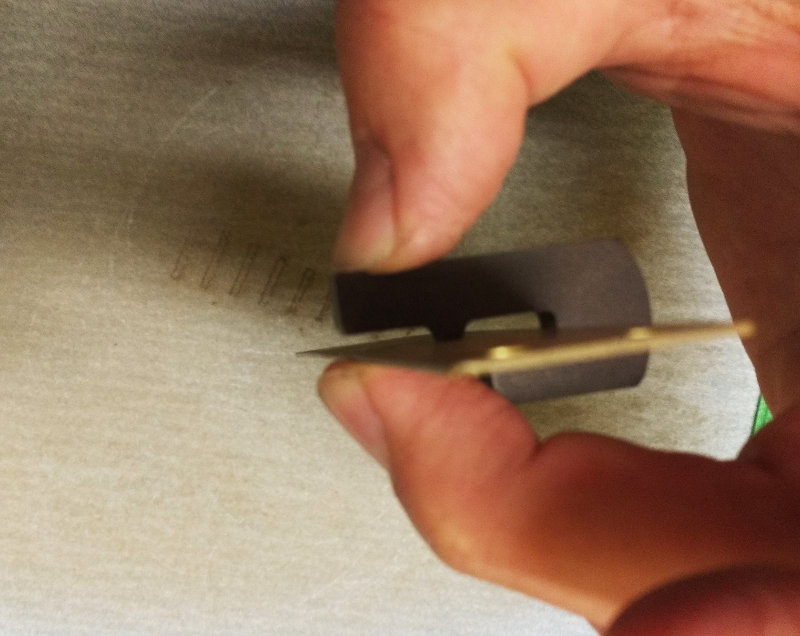
Now, I may have overshot the mark and pushed the middle of the plate back too far. How can you tell? You can check with the French Tuner or you can use the flatsanding process to save some time.
Since the middle of the plate is nice and shiny if I go back and flatsand I may not see any problem. Everything will look shiny!
So I drew some markings across the reed plate. This will reveal any spots where I may have over done it.

Sure enough, I over did it as is shown by the red spot that remains after sanding.
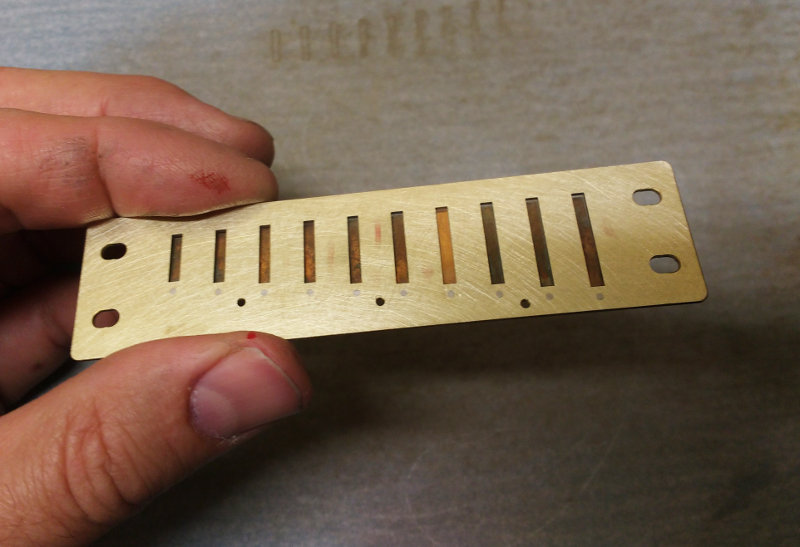
I corrected that using gentle pressure with the F tool. I drew more red lines once again to be sure I didn't overshoot the mark once again.
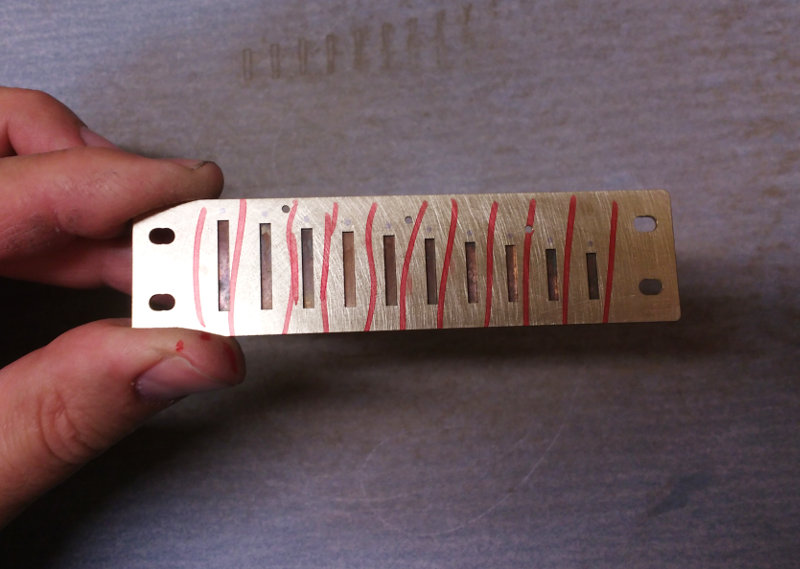
After a little flat sanding, every trace of the red lines are gone and that means the reed plate is now flat.
This made a very big difference in how well this harmonica plays!
